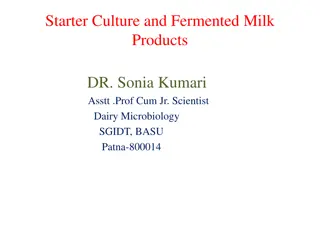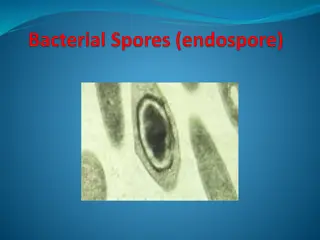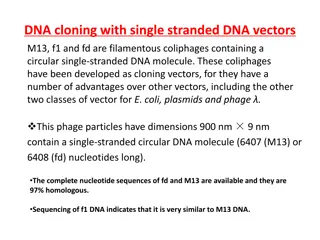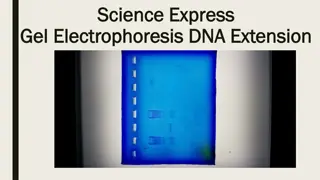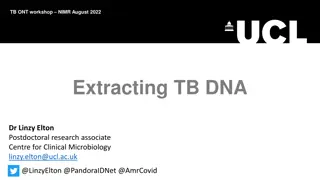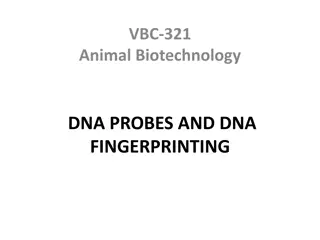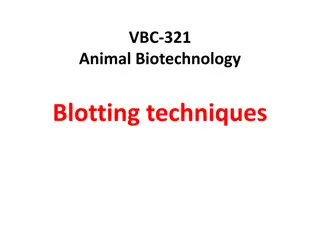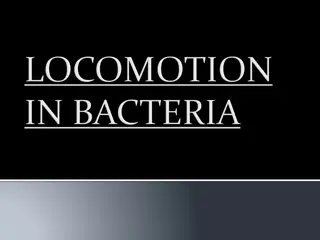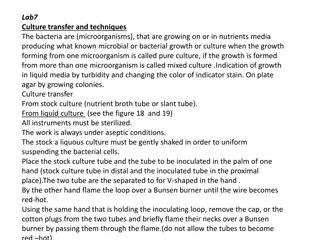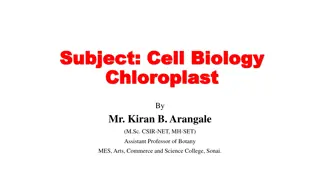Introduction to Phage DNA Integration in Bacterial Cells
Phage DNA can be introduced into bacterial cells through two methods: transfection and in vitro packaging. Transfection involves mixing purified phage DNA with competent E. coli cells, inducing DNA uptake via heat shock. In vitro packaging utilizes proteins coded by the phage genome, which can be prepared at high concentrations from cells infected with defective phage strains. These methods allow for the introduction of phage DNA into bacterial cells for various applications in molecular biology research.
Download Presentation

Please find below an Image/Link to download the presentation.
The content on the website is provided AS IS for your information and personal use only. It may not be sold, licensed, or shared on other websites without obtaining consent from the author. Download presentation by click this link. If you encounter any issues during the download, it is possible that the publisher has removed the file from their server.
E N D
Presentation Transcript
Introduction of phage DNA into bacterial cells
Two different methods: Transfection in vitro packaging Transfection: Equivalent to transformation, the only difference being that phage DNA rather than a plasmid is involved. The purified phage DNA, molecule, is mixed with competent E. coli cells and DNA uptake induced by heat shock. Transfection is the standard method for introducing the double stranded RF form of an M13 cloning vector into E. coli. or recombinant phage
In vitro packaging of cloning vectors Packaging requires a number of different proteins coded by the genome, but these can be prepared at a high concentration from cells infected with defective phage strains. single strain system, the defective phage carries a mutation in the cos sites, so that these are not recognized by the endonuclease that normally cleaves the e catenanes during phage replication . This means that the defective phage cannot replicate, though it does direct synthesis of all the proteins needed for packaging. The proteins accumulate in the bacterium and can be purified from cultures of E. coli infected with the mutated . The protein preparation is then used for in vitro packaging of recombinant molecules
With the second system two defective e strains are needed. Both of these strains carry a mutation in a gene for one of the components of the phage protein coat: with one strain the mutation is in gene D, and with the second strain it is in gene E. Neither strain is able to complete an infection cycle in E. coli because in the absence of the product of the mutated gene the complete capsid structure cannot be made. Instead the products of all the other coat protein genes accumulate An in vitro packaging mix can therefore be prepared by combining lysates of two cultures of cells, one infected with the e D strain, the other infected with the E strain. The mixture now contains all the necessary components for in vitro packaging.
With both systems, formation of phage particles is achieved simply by mixing the packaging proteins with DNA assembly of the particles occurs automatically in the test tube. The packaged DNA is then introduced into E. coli cells simply by adding the assembled phages to the bacterial culture and allowing the normal infective process to take place.
Insertional phage vector inactivation of a lacZ gene carried by the All M13 cloning vectors, as well as several vectors, carry a copy of the lacZ gene. Insertion of new DNA into this gene inactivates b-galactosidase synthesis, just as with the plasmid vector pUC8. Recombinants are distinguished by plating cells onto X-gal agar: plaques comprising normal phages are blue; recombinant plaques are clear
Insertional inactivation of the cI gene Several types of e cloning vector have unique restriction sites in the cI gene. Insertional inactivation of this gene causes a change in plaque morphology. Normal plaques appear turbid , whereas recombinants with a disrupted cI gene are clear . The difference is readily apparent to the experienced eye.
Selection using the Spi phenotype phages cannot normally infect E. coli cells that already possess an integrated form of a related phage called P2. is therefore said to be Spi+ (sensitive to P2 prophage inhibition). Some cloning vectors are designed so that insertion of new DNA causes a change from Spi+ to Spi , enabling the recombinants to infect cells that carry P2 prophages. Such cells are used as the host for cloning experiments with these vectors; only recombinants are Spi so only recombinants form plaques
Selection on the basis of genome size The packaging system, which assembles the mature phage particles, can only insert DNA molecules of between 37 and 52 kb into the head structure. Anything less than 37 kb is not packaged. Many vectors have been constructed by deleting large segments of the DNA molecule and so are less than 37 kb in length. These can only be packaged into mature phage particles after extra DNA has been inserted, bringing the total genome size up to 37 kb or more. Therefore, with these vectors only recombinant phages are able to replicate.











